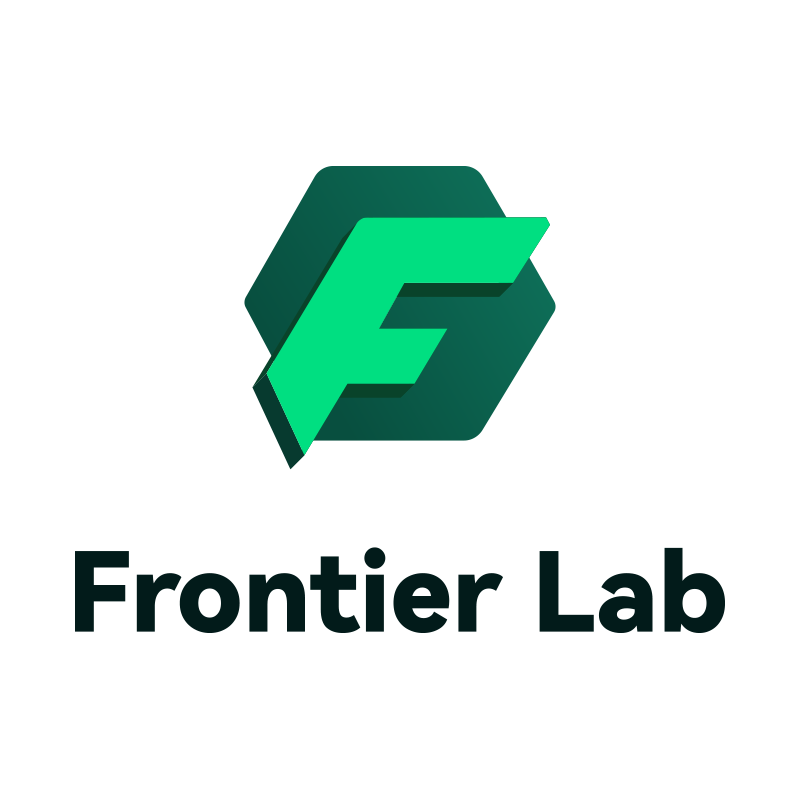Solana: A leading force in public chain technology innovation
introduction
Recently, the Crypto market has been in a state of panic due to the Mtgox compensation and the US and German government sell-offs. Most tokens have fallen by more than 20%, but there are also some relatively "strong" tokens, SOL is one of them. As a public chain project, Solana adopts a hybrid consensus mechanism of Delegated Proof of Stake (PoS) and Proof of History (PoH). While introducing a timestamp mechanism, it uses multi-threaded parallel processing and state compression technology, enabling Solana to have the advantages of high throughput and low transaction costs.
Solana has released three innovative technologies, Actions, Blinks, and ZK Compression, which have expanded into the field of SocialFi and significantly reduced existing transaction costs. These three new technologies will help Solana's future development and give the market new expectations for Solana. Coupled with the application for spot ETFs, Solana's future expectations and narratives are full and full of imagination.
Actions
definition
Solana's official document defines Actions as follows: Solana Actions is an API designed to allow websites to interact with the Solana blockchain and implement on-chain activities such as transfers, voting, and donations. It is a standard-compliant API that returns transactions on the Solana blockchain, which can be previewed, signed, and sent in a variety of different contexts, including QR codes, buttons + widgets (user interface elements), and websites on the Internet.
Actions are various pre-set transactions to be signed in Solana, which allow users to perform blockchain transactions without navigating to different applications or web pages. Actions are an abstract description of the transaction processing mechanism on the Solana chain, which contains execution instructions for various tasks, such as transaction processing, contract execution, and data operations. Users can send various transaction instructions through Actions, such as on-chain asset transfers and purchases of token assets. At the same time, developers can also use Actions to call and execute smart contracts to implement complex on-chain logic.
The emergence of Actions makes Solana network application development and user transactions more convenient, while also adding support for the execution of on-chain smart contracts and laying a solid foundation for Solana to enter the SocialFi field.
Actions workflow diagram (data source: https://solana.com/docs/advanced/actions)
Advantage
Efficient processing method: Compared with other public chains, Solana's main advantage is high performance. In the design and adoption of Actions, Solana still maintains the concept of high performance. Solana uses a technology called Turbo Transactions, which uses multiple CPU cores to process transactions in parallel to further improve the network's throughput and execution speed. When processing Actions, it enables it to execute quickly in a large-scale network while still maintaining efficiency and stability.
Low latency of the network: Benefiting from Solana's high performance, the processing latency of Actions will also be very low, providing users with a smoother and more efficient trading experience. This low latency advantage also provides Actions developers with more opportunities to build more complex and interactive applications without having to worry about network latency affecting the user experience, making the entire ecosystem more powerful and more competitive.
Greater flexibility: Through Actions, users can call smart contracts, execute various cumbersome business logic, store and read data, and other functions. This flexibility makes Actions a powerful tool that meets the various needs of users in the blockchain field. In addition, Actions also supports extensions, and users can customize it according to their own needs, further improving its flexibility and applicability.
Blinks
definition
Solana's official Twitter document defines Blinks as: Blockchain links are a new primitive that converts on-chain operations into shareable links. Blinks can convert any Solana Actions into a shareable, metadata-rich link. Blinks enables clients that support Actions (browser extension wallets, robots) to display more functionality to users. Client applications that support Blinks simply detect URLs that are compatible with Actions, parse them, and allow users to interact with them on a standardized user interface.
In layman's terms, Blinks is a concrete representation of Actions, which can be a QR code, a URL, a clickable button, etc. Blinks can convert any Solana Actions into any form of dissemination on any information platform, allowing clients that can detect Actions (such as browser extension wallets, robots, etc.) to display additional functions to users. When using Blinks, users can operate specific matters on the current platform page without entering the Dapp behind this concrete representation (which can be a QR code, URL, etc.), making the interaction method extremely convenient and simple.
Blink working principle diagram
Actions and Blinks do not exist independently, but in a symbiotic relationship. Actions are the basis of Blinks, and Blinks is the concrete form of Actions. Blinks presents Actions in an abstract form to users, so that users don't even feel the existence of Actions when using them.
Advantage
Enhance user experience: With Blinks, users no longer need to exit the current page and then enter the Dapp page they want to operate. It provides users with a one-stop operation service, greatly reducing the user's operation links and operation difficulty, making it as simple as clicking on a link in Web 2.
Increased traffic for Solana: After the development teams of various projects on Solana used Blinks, the most significant effect was the ability to direct traffic to Solana on various social platforms. In the Web 3 world, each project can only win in the fierce competition if it gets more traffic. Blinks can visualize various actions into various forms, which can be forwarded on various information exchange platforms, such as Twitter, Discord, Telegram, etc. The spread of Blinks on these platforms will bring huge traffic to Solana, thereby promoting the development of Solana's ecosystem.
Lowers the threshold for users to participate in Web 3: Traditional Web 2 users generally do not understand the most basic operations on the chain, such as wallet authorization signatures, on-chain transfers, and gas fees. Therefore, in order to achieve rapid traffic diversion, it is necessary not only to divert traffic from traditional platforms, but also to lower the threshold for on-chain operations. After using Blinks, it can abstract the process behind each specific operation into a URL, and users only need to click it without understanding the principles and processes behind the operation.
shortcoming
Increased risk of fraud: Currently, Blinks can only be forwarded on Twitter, but Twitter itself is an environment full of fraud. Before Blinks, fraudsters would use high-imitation websites or other virus implants to defraud victims' assets. After the emergence of Blinks, the efficiency of fraud has been greatly improved and the cost of fraud has been reduced. Now fraudsters do not need to develop high-imitation websites, but can directly use a picture and a link to complete all previous operations. This method makes users defenseless.
Unable to cover mobile client: At present, the use of Blinks can only be limited to the computer. However, the most commonly used way of Twitter is still the mobile terminal, and the computer terminal accounts for a relatively small proportion. Therefore, some investors question that the effect of Blinks on the increase in traffic to Solana is not as high as expected, and it is just a gimmick for price speculation.
ZK Compression
definition
Solana's official documentation defines ZK Compression as: ZK Compression is a new fundamental feature built on Solana that helps developers and users build applications at scale. Developers and users can choose to compress on-chain states, reducing state costs by orders of magnitude while maintaining the security, performance, and composability of Solana L1.

technical analysis
All project developers on all blockchains face two basic costs: computational cost and state cost. As long as these two costs are reduced as much as possible, the gas fee problem of the entire chain will be solved and more users and developers will be attracted.
Solana relies on a consensus mechanism that combines Proof of Stake (PoS) and Proof of History (PoH), and uses multi-threaded parallel processing while introducing a timestamp mechanism, which enables Solana to have the advantages of high throughput and low transaction costs, and has solved the problem of computing costs. The emergence of ZK Compression is a good way to solve the problem of state costs.
ZK Compression uses a process called state compression to enable developers to utilize Solana's ledger space in a more economical way, rather than more expensive account space, to store certain types of data. ZK Compression uses the hash value of off-chain data to store on-chain, stores specific data off-chain, and verifies it using the state tree. The application of this technology can effectively reduce the demand for on-chain storage space, thereby reducing costs and improving overall scalability. By adopting ZK Compression technology, the Solana ecosystem can handle large amounts of data more efficiently and provide developers with more flexible storage options, driving the development and innovation of blockchain applications.
Let's analyze ZK Compression in a more understandable way and split it into two parts:
Compression stands for compression. This step achieves that the on-chain account only stores the state root. The basic data is stored in the cheaper Solana off-chain ledger, thereby achieving the purpose of reducing the state storage cost;
ZK means that the protocol uses ZK technology to ensure the integrity of the compressed state. Users and developers can obtain validity proofs from RPC providers that support ZK compression. When ZK technology is used to achieve on-chain and off-chain interactions, ZK technology is more reliable and faster than OP technology, so that Solana will not affect its higher computing speed.
working principle
The working principle of ZK Compression is very simple and very similar to the way Rollup in Ethereum L2 works.
ZK Compression compresses the data of each account into a hash value, which is stored in the leaf node of the state tree. Each account hash contains not only the information of the account itself, but also its position in the state tree. In this way, each account hash is unique, which is convenient for subsequent indexing.
The state root of each state tree will be stored on Solana's mainnet. This state root is like a fingerprint of the entire tree. As long as this fingerprint is verified, it can be confirmed that all data in the entire tree is complete and has not been tampered with.
The detailed data of each account is not directly stored on Solana's mainnet, but is stored as call data in the cheaper Solana ledger space. Solana's mainnet only stores the state root and some basic metadata, which saves storage costs and ensures data security. In order to ensure the integrity of these compressed data, ZK Compression also uses zero-knowledge proof. It can be used to prove the authenticity and integrity of the data without revealing the specific data content.
Although intuitively ZK Compression seems to be the Rollup in Ethereum L2, Vitalik defines ZK Compression as a stateless client architecture. Therefore, ZK Compression is essentially an optimization of the internal storage structure of L1.
Summarize
Solana has proposed three technical innovations, Actions, Blinks, and ZK Compression, in two weeks, which is enough to show that Solana has always been pursuing the development concept of faster and more convenient public chain applications. The application of these three new technologies not only expands Solana's application areas from transactions to social networking, but also shows Solana's ability to continuously innovate and advance in public chain technology.
These three new technologies are currently only being tested, and their specific effects can only be known after large-scale application, but judging from their price performance, investors are full of expectations for their prospects. Solana has already developed into a leading force in public chain technology innovation.



